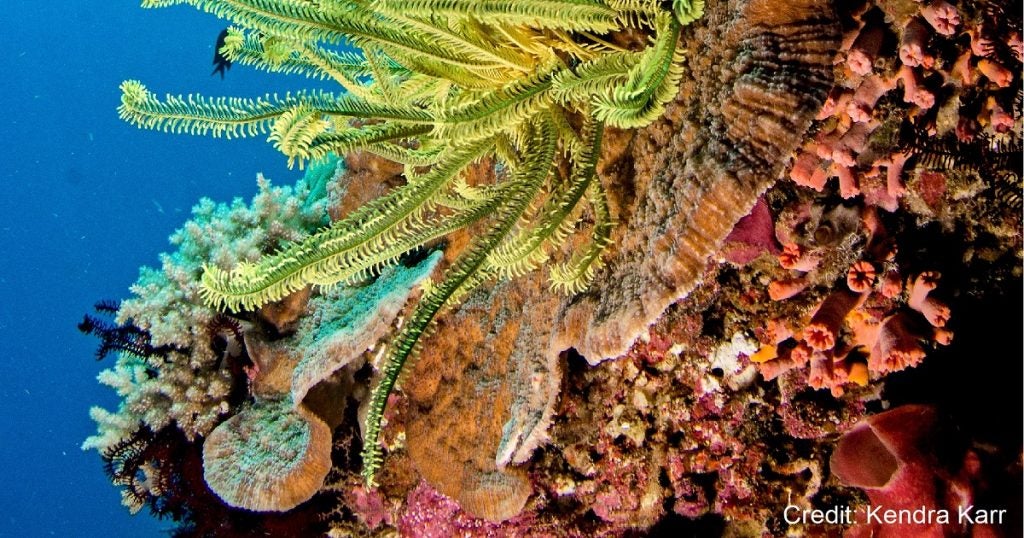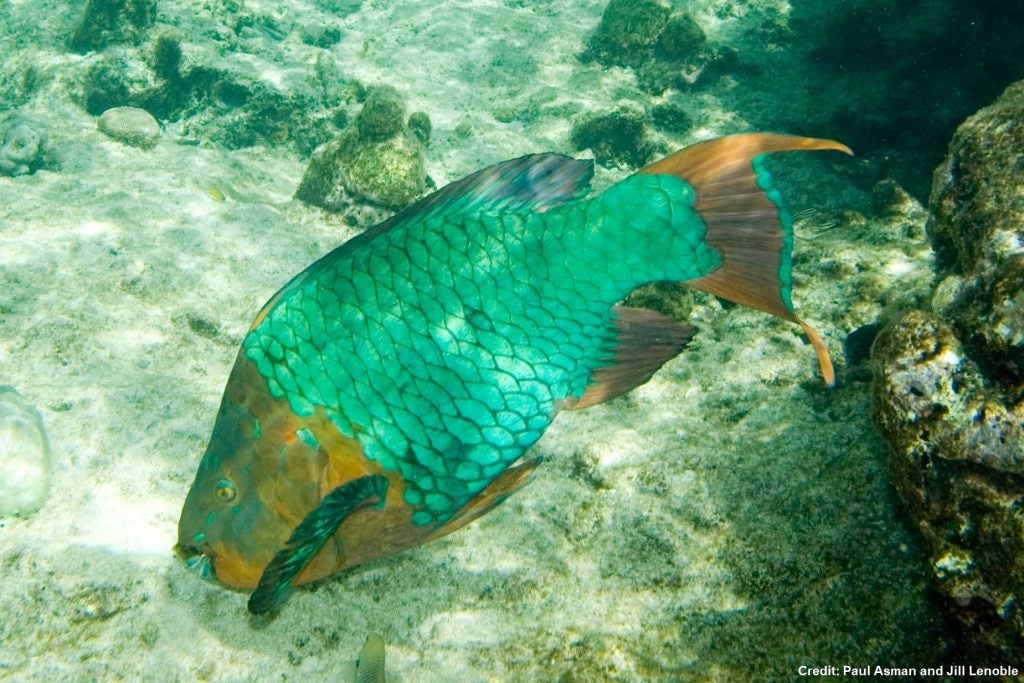 Editor’s note: This is the sixth in a multi-part blog series, Fisheries for the Future, examining the impacts from climate change on global fisheries and the opportunities to address these emerging challenges. Throughout the series, we’ll be investigating how climate change will impact the world’s supply and distribution of fish and what we can do to ensure the most sustainable future for ourselves and our planet. Learn more about this work: Resilient Seas
Editor’s note: This is the sixth in a multi-part blog series, Fisheries for the Future, examining the impacts from climate change on global fisheries and the opportunities to address these emerging challenges. Throughout the series, we’ll be investigating how climate change will impact the world’s supply and distribution of fish and what we can do to ensure the most sustainable future for ourselves and our planet. Learn more about this work: Resilient Seas
Coral reefs are highly vulnerable to climate change and are already experiencing mass coral bleaching and die-off events worldwide. It’s no secret that coral reefs need our help. Recent estimates indicate that half of the Great Barrier Reef was decimated by bleaching events in 2016 and 2017. This trend is alarming on many levels. Coral reefs are a hotbed of biodiversity and abundance, and coral reef fisheries are critically important to the livelihood and food security concerns of millions of people — many of whom live in developing countries.
In the face of climate change, the question becomes: Are there ways we can improve the resilience of tropical reef systems so they can withstand or adapt to changing ocean conditions? In this post we’ll talk about some recent research we’ve co-authored with the University of Maine and University of California, Santa Barbara that gives us some hope for coral reef ecosystems. This research shows how coral reef systems have been made more resilient in the Caribbean and indicates that fisheries management has a strong role to play in fostering this resilience.
Recent research gives us some hope for coral reefs
These findings are encouraging because they go against the common perception that future generations will only be able to experience these natural treasures through photos and videos from a bygone era.
This research focuses on the island of Bonaire, which is lauded as one of the last healthy coral reefs in the Caribbean. It is no accident that reef species here have managed to proliferate even after significant environmental disturbances like warming waters and coral disease. Our results show that smart fishing regulations and environmental protections have contributed to the island’s almost unparalleled ability to recover from these large environmental disturbances. Several years ago, coral cover in Bonaire dropped by nearly 25% following damage from a hurricane and a coral bleaching event. However, after less than a decade, corals had recovered to pre-bleaching levels — something very unique compared to other places in the Caribbean.
 One of the biggest factors for Bonaire’s ecosystem resilience is the abundance of herbivorous fish, like parrotfish. Often when a reef experiences a disturbance, harmful algae displaces and outcompetes coral. In Bonaire, fishing regulations and protections have ensured a large abundance of parrotfish, a species that actively serves as an algae hedge trimmer. In other words, coral recovery in Bonaire occurred following hurricane and bleaching events in part because the presence of herbivores like parrotfish kept harmful algae in check.
One of the biggest factors for Bonaire’s ecosystem resilience is the abundance of herbivorous fish, like parrotfish. Often when a reef experiences a disturbance, harmful algae displaces and outcompetes coral. In Bonaire, fishing regulations and protections have ensured a large abundance of parrotfish, a species that actively serves as an algae hedge trimmer. In other words, coral recovery in Bonaire occurred following hurricane and bleaching events in part because the presence of herbivores like parrotfish kept harmful algae in check.
What could this mean for other coral reefs?
The dynamic between herbivorous fish and climate change uncovered in Bonaire is a feedback mechanism. Unmanaged fishing and climate change together can be perilous to coral reef ecosystems. Being aware of species interactions such as these is one aspect of resilience practice, and in this case, the solution is to reverse this feedback loop in order to help facilitate coral reef recovery. This is done by ensuring healthy populations of herbivorous fish.
Even in the Caribbean, Bonaire is not alone in its mission of working toward managed ecosystem resilience. There are a variety of ways to address these types of feedbacks and to maintain ecological balance through implementation of different types of fishery management practices. In several places where Environmental Defense Fund (EDF) works, such as in Belize and Cuba, spatial protections and other measures are being deployed in ways that maintain populations of important herbivores. The health of these systems indicates that they too are displaying resilience. In these Latin American-Caribbean countries, the use of spatial measures and other types of fishery management approaches are being deployed in ways that can enhance reef resilience.
In the Garden of the Queens in Cuba, fishing communities recently enacted a sustainable fishing law that is poised to advance Cuba’s goals of protecting its natural environment for more fish in the future, more fishing jobs and prosperous marine ecosystems including coral reefs. Cuba has set aside more than 250 natural reserves spanning over 20% of its territory. One of the most spectacular reef systems in Cuba, the Garden of the Queens is one of Cuba’s natural reserves. The implementation of reserve status has resulted in a substantial increase in the abundance of fish species and the system is displaying greater resilience than other systems around the Caribbean.
In Belize, the nationwide system of managed access resulted in higher fish catch for fishermen while reducing illegal fishing by 60% and expanding marine protected areas (MPAs) from 3% to 10%. Coral reefs the world over also have potential to recover if local communities are able to identify and manage the threats they can control, including fishing pressure, pollution and habitat destruction.
While these examples give us some hope for coral reef ecosystems, we must be clear that the global community needs to reign in our emissions if the oceans of the future will support thriving coral reef ecosystems. Building resilience of highly vulnerable ecosystems can help — but only so much. In the face of some limited disturbances, these experiences show that coral reefs can be made more resilient, and fishing practices have a large role to play. We will continue working with fishing communities around the world to apply and adapt these lessons learned in the Caribbean to other coral reef ecosystems.









